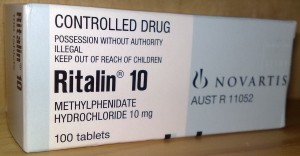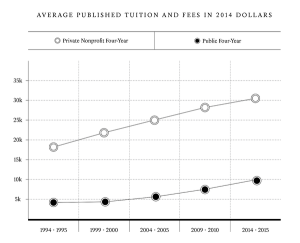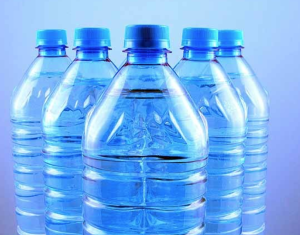In these years, the rate of suffering by stroke is increasing. More and more people are seeking methods to avoid stroke. What is a stroke? A stroke is a”brain attack”. It can happen on any people at anytime, but elders are affected on a higher possibility. “It occurs when blood flow to an area of brain is cut off. When this happens, brain cells are deprived of oxygen and begin to die. When brain cells die during a stroke, abilities controlled by that area of the brain such as memory and muscle control are lost.” (Stroke.org)
According to the latest study, learning another language, not only benefit for communicating, but also extend to many hidden cognitive domains, such as to protect your brain in the event of a stroke or dementia and other health problems.Researchers from Britain and India collected data 608 stroke patients in Hyderabad. They found that the patients who can handle more than one language have a greater chance of recovery from stroke. Rehabilitation also increased prospects for a very high level. Bilingual people have the probability of recovery twice more than that of monolinguals after stroke, even taking into account other factors, such as smoking, hypertension, diabetes, and age.
The researchers found that brain is challenged when people say more than one language, and this experience will inspire cognitive reserve, which would enhance the brain’s ability to deal with damage caused by a stroke and other diseases.Bilingual people can switch between two languages, when they stop using one, it is necessary to activate another language to communicate,” Thomas Bak, one of the study authors at the University of Edinburgh, said, “This switch allows the brain to continuous evolving, thus becoming factors in helping stroke patients to have rehabilitation. Apart from showing better recovery on brain function after a stroke, bilinguals who are able to speak more than one language also perform better in stroke sequelae tests, including tests of attention, gather and organize information.
It is worth noting that the amazing recovery results of this study demonstrates particular related areas. According to the researchers published “Stroke” magazine, Hyderabad is a multicultural city, mixed with a lot of languages, including Telugu, Urdu, Hindi and English. These people live in Hyderabad receive daily “brain training” – so it has been a corresponding benefit – which is difficult to have the same conditions as in other places.
Personally, I think this study did not explain clearly enough. It takes a long page to state the importance of knowing different languages. But how can we classify “different”? For example, in China, even nearby provinces have varied dialects. Can dialects be counted? Or two have to come from completely different phylum? Moreover, the question is “Has Learning languages to be the only way?” In my opinion, as long as you keep your brain actively often enough, you will always be influence less after a brain damage. For many, learning anything that new for them can be beneficial, including reading a new book or using a new ways to play poker. More detailed guidance for people to maintain an active brain can see here. Overall, I think this group of researchers claim their founding a little subjective. I believe learning new languages is only one way to exercise brains. We should find out the real reason for impact but not hold one example too tight.
Reference:





 You’re also probably familiar with how those who nap after the meal blame it on something called tryptophan. Maybe you yourself took a little cat nap this year, I know I did. This time around, I was the one to bring up tryptophan and my girlfriend was quick to say that tryptophan is not actually the reason America naps after turkey dinner. As with many of my blog posts this semester, lets find out what is really going on with something else we put in our bodies, Turkey.
You’re also probably familiar with how those who nap after the meal blame it on something called tryptophan. Maybe you yourself took a little cat nap this year, I know I did. This time around, I was the one to bring up tryptophan and my girlfriend was quick to say that tryptophan is not actually the reason America naps after turkey dinner. As with many of my blog posts this semester, lets find out what is really going on with something else we put in our bodies, Turkey.












![140619-share-of-ear-listening[1]](https://sites.psu.edu/siowfa15/wp-content/uploads/sites/29639/2015/11/140619-share-of-ear-listening1-300x169.jpg)








 http://environment.nationalgeographic.com/environment/global-warming/gw-solutions
http://environment.nationalgeographic.com/environment/global-warming/gw-solutions



 In order to make the decision of whether or not a baby will be given a pacifier, the parents must weigh the pros and cons. Since sucking is often a calming reflex to babies, the pacifier can soothe a fussy child and act as a temporary
In order to make the decision of whether or not a baby will be given a pacifier, the parents must weigh the pros and cons. Since sucking is often a calming reflex to babies, the pacifier can soothe a fussy child and act as a temporary  SIDS takes the lives of around 3,000
SIDS takes the lives of around 3,000 

 for all of us when I say that we have all felt overwhelmed at some point in our lives due to built up stress. This stress may come from a social situation, an issue with family, or extreme stress from schoolwork. I’m sure many of us have felt the mental strain that stress has on us, some may have even gotten to the point where it feels like our head is about to explode. Certainly, if you have reached that level on the stress meter, you have also experienced the effects that extreme stress has on your mood. What many people don’t consider, though, is what a strong negative impact extreme stress will have on your body.
for all of us when I say that we have all felt overwhelmed at some point in our lives due to built up stress. This stress may come from a social situation, an issue with family, or extreme stress from schoolwork. I’m sure many of us have felt the mental strain that stress has on us, some may have even gotten to the point where it feels like our head is about to explode. Certainly, if you have reached that level on the stress meter, you have also experienced the effects that extreme stress has on your mood. What many people don’t consider, though, is what a strong negative impact extreme stress will have on your body. Even if you do not realize it, the stress you experience plays a toll on your body in an alarming number of ways. Some of the most common results are to get a stomachache, to get a headache, and to experience aches and pains especially in your neck and back. So many people immediately think these
Even if you do not realize it, the stress you experience plays a toll on your body in an alarming number of ways. Some of the most common results are to get a stomachache, to get a headache, and to experience aches and pains especially in your neck and back. So many people immediately think these 







